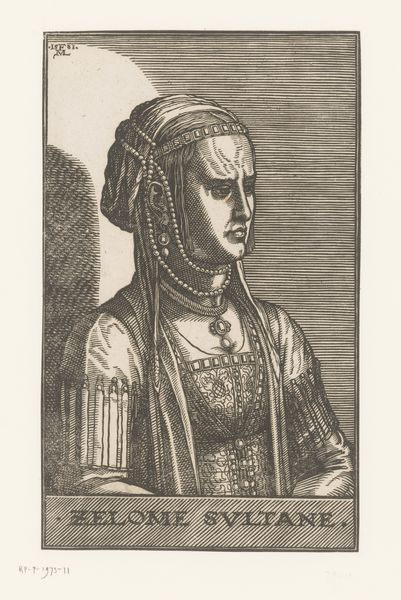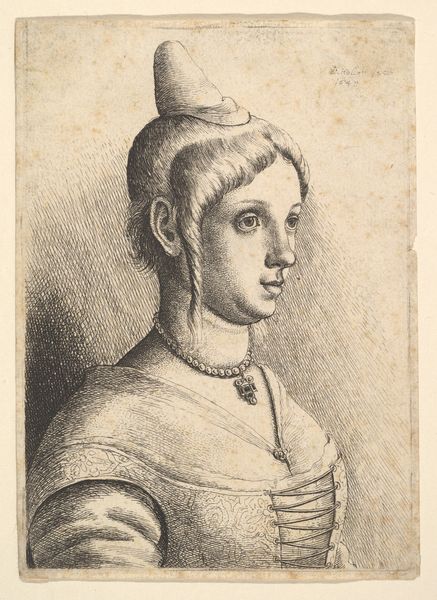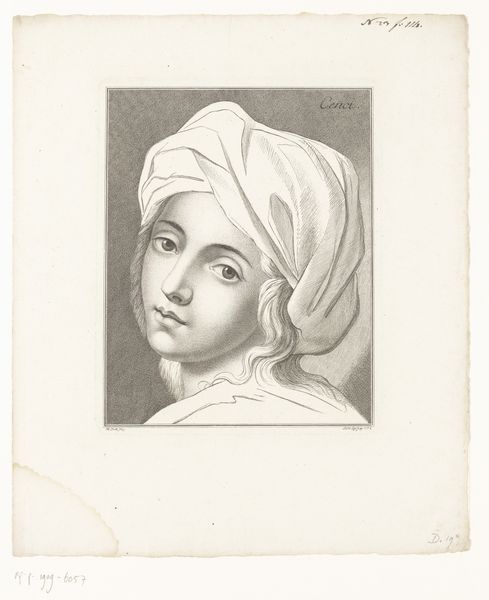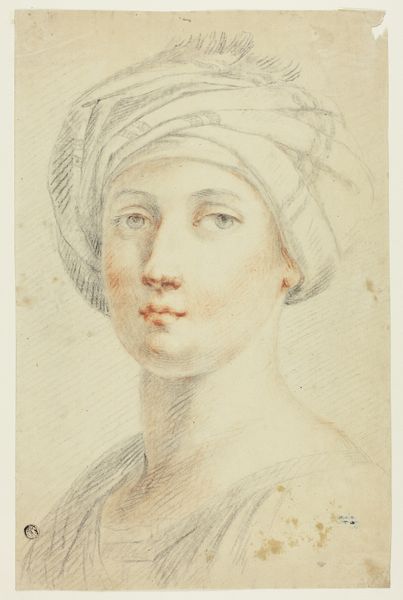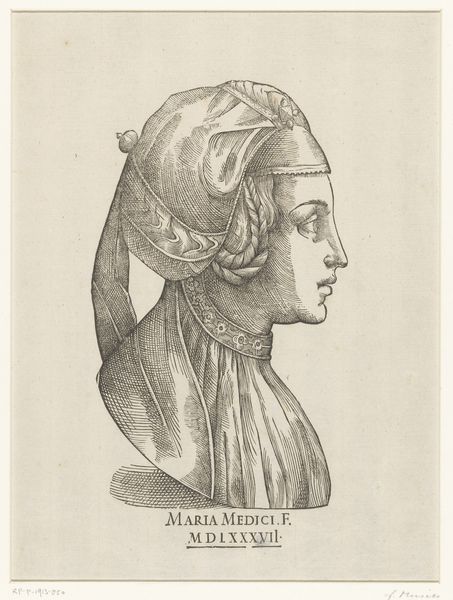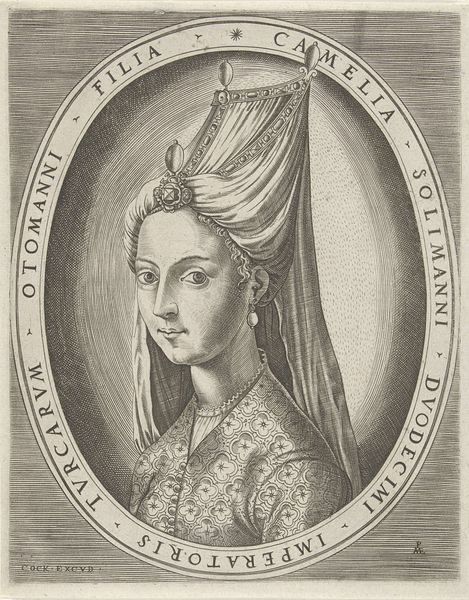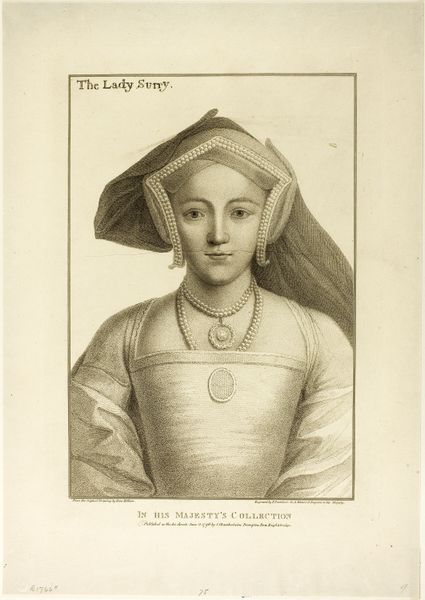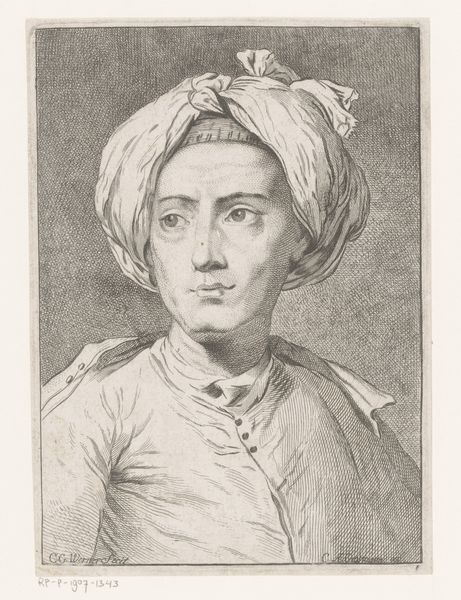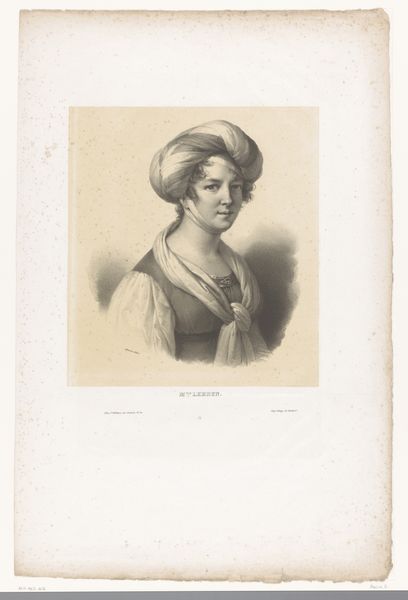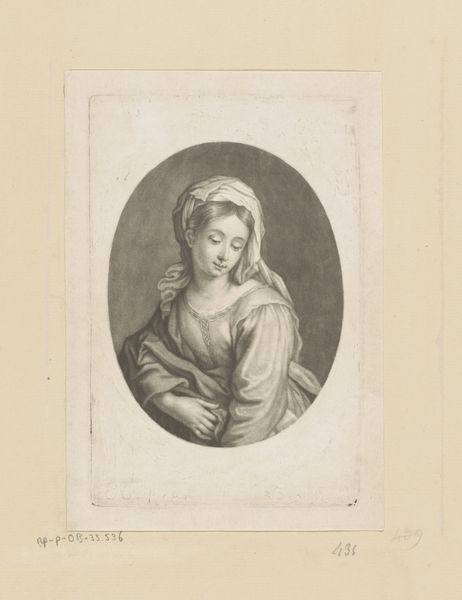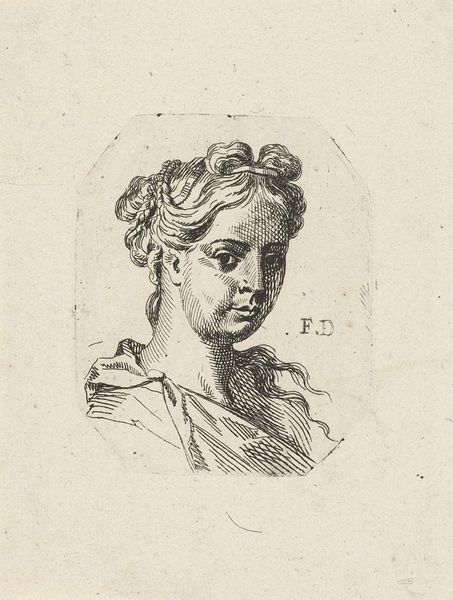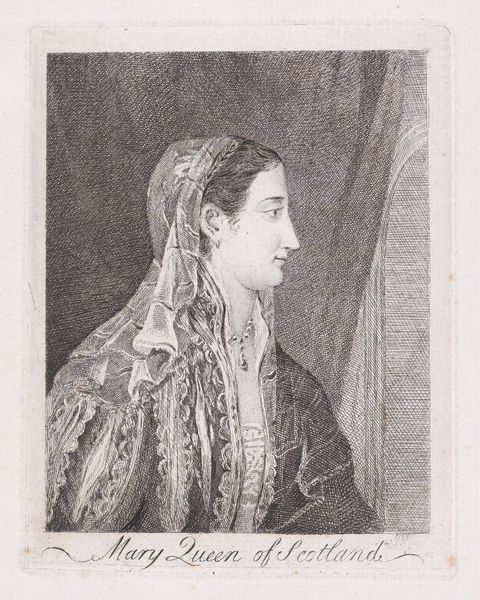
drawing, engraving
#
portrait
#
drawing
#
neoclacissism
#
caricature
#
portrait reference
#
pencil drawing
#
portrait drawing
#
history-painting
#
engraving
Dimensions: height 141 mm, width 108 mm
Copyright: Rijks Museum: Open Domain
Curator: Take a moment to consider this engraving, "Portret van een onbekende vrouw met een tulband," created by Carl Friedrich Holtzmann sometime between 1750 and 1811, an era influenced by neoclassicism. Editor: There's a distinct softness to it despite the linear medium. The rendering almost evokes a dream-like quality with the way light models the face. The texture feels carefully rendered; the soft feathered turban and slightly luminous skin create contrast that directs the eye. Curator: Holtzmann was working during a period of significant societal shifts. The rising merchant class and their engagement with orientalist aesthetics created new demands for portraiture, beyond the traditional aristocratic circles. How do you see this engraving fitting into that framework? Editor: Interesting point. While the turban immediately places this within an exoticized context, the tight framing and focus on her features pull me back into a more intimate engagement. Her slightly averted gaze adds a layer of mystery. I'm drawn to her facial features—it's not conventionally beautiful but possesses an intriguing individuality. Curator: Precisely. These 'Turkish' portraits, very popular at the time, reflect the shifting social landscapes. Often, they were not documents of actual encounters but projections of European fantasies. In the context of increased trade and political relations with the Ottoman Empire, these portraits served as visual representations of power dynamics. This is especially poignant as Holtzmann spent some time producing for the Russian court which, through Catherine II, further enhanced interest in Eastern and classical culture. Editor: I agree. Semiotically, the turban functions as a signifier, signaling the exotic 'other,' but the woman’s directness is what captivates. Holtzmann used cross-hatching skillfully. You can almost feel the subtle changes in the planes of her face. The artist’s handling transforms a somewhat conventional subject into something far more captivating. Curator: Ultimately, artworks like this prompt us to think critically about how representations, especially of those different from us, have been shaped and reshaped throughout history. Editor: A wonderful demonstration of how attention to line, light, and composition can enhance a work's inherent mystery.
Comments
No comments
Be the first to comment and join the conversation on the ultimate creative platform.
